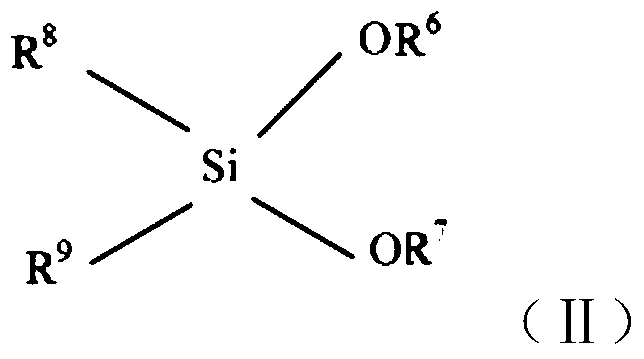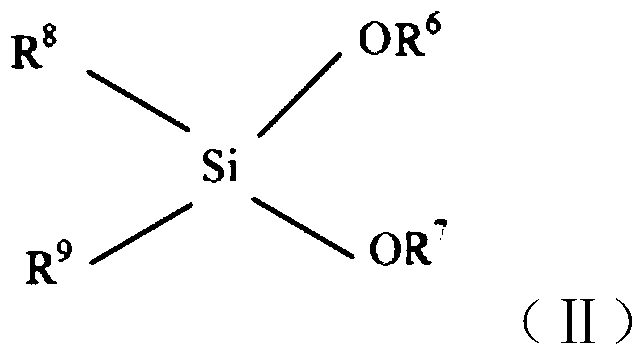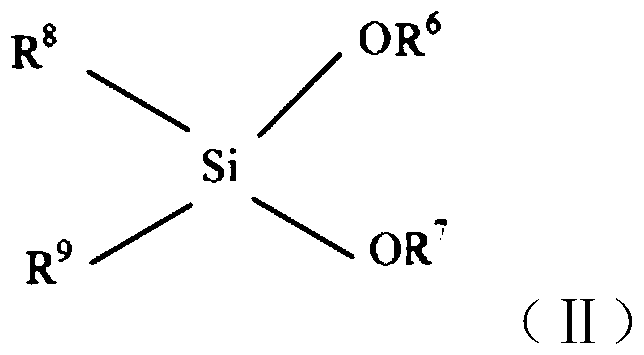A kind of olefin polymerization catalyst system and its application
A technology of olefin polymerization and catalyst, which is applied in the field of olefin polymerization, can solve problems such as difficulties, and achieve the effects of simple polymerization method, high polymerization activity, and improved hydrogen adjustment sensitivity
- Summary
- Abstract
- Description
- Claims
- Application Information
AI Technical Summary
Problems solved by technology
Method used
Image
Examples
Embodiment approach
[0101] According to a specific embodiment of the present invention, the specific preparation method of the magnesium halide alcoholate carrier includes: mixing anhydrous magnesium halide and lower carbon alcohol, and heating up to react to form a magnesium halide alcoholate melt, and the reaction temperature is 90-140°C, after high-shearing in the dispersion medium, put it into the cooled inert medium to form spherical magnesium halide alcoholate particles, and obtain spherical carriers after washing and drying. High shear can be obtained by conventional methods, such as high-speed stirring method (such as CN1330086), spray method (such as US6020279), and high-gravity rotating bed (such as CN1580136A) and emulsifier method (CN1463990A). The dispersant system uses hydrocarbon inert solvents, such as kerosene, white oil, silicone oil, paraffin oil, vaseline oil, etc. The cooling medium is selected from pentane, hexane, heptane, petroleum ether, raffinate and the like.
[0102] ...
preparation example
[0114]In a 300ml stirred glass reaction bottle fully replaced by high-purity nitrogen, add 100ml of titanium tetrachloride, cool to -20°C, add spherical magnesium chloride alcoholate (see Chinese patent CN1330086A for the preparation method), and slowly heat up to 110 ℃, add 2.5mol of glycol ester compound and 3.9mmol of carboxylate compound in the process of heating up, after keeping the temperature at 110℃ for 0.5h, filter off the liquid, add titanium tetrachloride to treat twice, then wash five times with hexane, The titanium-containing solid catalyst component A was obtained after vacuum drying.
Embodiment
[0116] According to the ingredients in Examples 1-15 and Comparative Examples 1-4 in Table 1, and referring to the following conditions, the polymerization of propylene was carried out.
[0117] In a 5-liter autoclave, nitrogen flow was used to purging at 70°C for 1 hour, then the polymerization vessel was replaced 3 times with gas-phase propylene, and 5ml of alkylaluminum compound (the concentration of triethylaluminum was 0.5 mmol / ml), 1ml of the hexane solution of the external electron donor (the concentration of the external electron donor is 0.1mmol / ml), 10ml of anhydrous hexane and 8-12mg of titanium-containing solid catalyst component A. Close the autoclave, introduce a certain volume of hydrogen (at 25°C, atmospheric pressure) (L) and 1.0-1.2Kg of liquid propylene; quickly raise the internal temperature to 70°C while stirring. After polymerization at 70°C for 1 hour, the stirring was stopped, unpolymerized propylene monomer was removed, the polymer was collected, and v...
PUM
 Login to View More
Login to View More Abstract
Description
Claims
Application Information
 Login to View More
Login to View More - R&D
- Intellectual Property
- Life Sciences
- Materials
- Tech Scout
- Unparalleled Data Quality
- Higher Quality Content
- 60% Fewer Hallucinations
Browse by: Latest US Patents, China's latest patents, Technical Efficacy Thesaurus, Application Domain, Technology Topic, Popular Technical Reports.
© 2025 PatSnap. All rights reserved.Legal|Privacy policy|Modern Slavery Act Transparency Statement|Sitemap|About US| Contact US: help@patsnap.com



